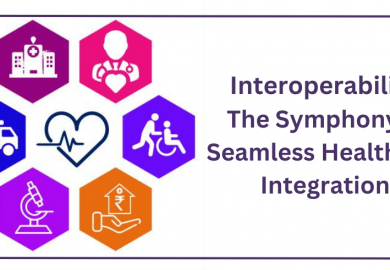360-Degree Patient Care: A Comprehensive Approach to Healthcare
In the dynamic landscape of healthcare, providing comprehensive and patient-focused care has become a top priority. The term “360-degree patient care” represents a comprehensive approach aimed at providing patients with holistic care that goes beyond addressing their medical conditions and extends to catering to their individual needs, values, and preferences.
In this article, we’ll delve into what 360-degree patient care entails, why it’s crucial, and how healthcare providers are embracing this holistic approach to redefine the patient experience.

What is 360-degree Patient Care?
360-degree patient care is an approach that takes into account every aspect of a patient’s well-being. It recognizes that a patient’s health is influenced by various factors, including physical, emotional, social, and environmental determinants. This approach revolves around creating a personalized healthcare journey that acknowledges the patient’s unique circumstances and tailors care accordingly.
Why Does It Matter?
- Comprehensive Well-Being: 360-degree patient care acknowledges that patients are not merely a collection of symptoms but whole individuals with interconnected physical, emotional, and social facets. By addressing all these elements, it aims to foster comprehensive well-being.
- Enhanced Patient Satisfaction: Patients who receive care that addresses their individual needs and values are more likely to be satisfied with their healthcare experience. It establishes trust and empowers patients to actively participate in their care.
- Improved Health Outcomes: By considering the patient in their entirety, healthcare providers can develop care plans that are more likely to lead to improved health outcomes. This encompasses not only better disease management but also mental and emotional well-being.
- Preventive Care: 360-degree patient care places a strong emphasis on preventive healthcare. It includes regular check-ups, health screenings, and vaccinations to maintain a patient’s overall well-being and reduce the risk of illness. Preventive care not only saves lives but also reduces healthcare costs in the long run.
- Mental Health and Well-being: Mental health is a vital component of overall well-being. 360-degree patient care recognizes the importance of addressing mental health issues and provides access to mental health professionals, counseling services, and resources for patients who may be dealing with depression, anxiety, or other psychological conditions.
- Reduction of Health Disparities: A 360-degree approach to patient care can help reduce health disparities by recognizing and addressing social determinants of health. This ensures that all patients, regardless of their background or circumstances, receive equitable care.
- End-of-Life Care: Providing comprehensive patient care also extends to end-of-life care. Healthcare providers should offer palliative care and support for patients facing terminal illnesses, helping them maintain comfort, dignity, and quality of life during their final stages.
Key Elements of 360-Degree Patient Care
- Personalized Care Plans: Healthcare providers create personalized care plans that consider the patient’s unique circumstances, preferences, and goals. These plans may involve dietary guidance, exercise recommendations, and strategies to improve overall lifestyle.
- Patient-Centered Communication: Effective communication that involves active listening and empathy is crucial. It is vital to understand the patient’s values, preferences, and concerns.
- Remote Patient Monitoring: Advances in technology have made remote patient monitoring more accessible. This allows healthcare providers to continuously track a patient’s vital signs, medication adherence, and other relevant data, making it easier to detect issues early and provide timely interventions.
- Enhanced Assessment: A comprehensive initial assessment that takes into account not only the patient’s physical health but also their emotional and social well-being. This may include evaluating social support, lifestyle factors, and emotional health.
- Holistic Therapies: Integrating holistic therapies such as acupuncture, chiropractic care, and mindfulness-based interventions can complement conventional medical treatments, addressing not only physical but also emotional and spiritual aspects of health.
- Education and Support: Patients should be educated about their health conditions and encouraged to participate in their care. Support for emotional and psychological well-being is equally important.
How Healthcare Providers Are Implementing 360-degree Patient Care?
- Patient Portals: Healthcare organizations are developing patient portals that allow patients to access their health records, communicate with their care teams, and schedule appointments online, promoting patient engagement and convenience.
- Integrated Care Teams: Many healthcare institutions are establishing integrated care teams that include physicians, nurses, psychologists, social workers, and other specialists. These teams collaborate to provide holistic care.
- Telehealth and Remote Monitoring: Telehealth and remote monitoring technologies allow healthcare providers to keep track of a patient’s health beyond the clinical setting, providing ongoing support.
- Patient Feedback: Gathering patient feedback through surveys and evaluations helps healthcare providers continually improve the patient experience and adapt their services to better meet individual needs and preferences.
- Community Partnerships: Healthcare providers are forging partnerships with community organizations to address social determinants of health. This may involve connecting patients with housing assistance, food programs, or employment resources.
- Data Analytics: Big data and analytics play a significant role in 360-degree patient care. By analyzing large sets of patient data, healthcare providers can identify trends, risk factors, and areas for improvement in patient care.
Conclusion
The 360-degree patient care represents a paradigm shift in healthcare. It acknowledges that health is not confined to a medical diagnosis but is influenced by a wide range of factors. By embracing this comprehensive approach, healthcare providers can create a more personalized and effective care experience for patients. 360-degree patient care ultimately leads to better health outcomes, improved patient satisfaction, and a healthcare system that is better equipped to address the diverse needs of its patients.
As healthcare continues to evolve, the principles of 360-degree patient care remain at the forefront of delivering quality, patient-centered healthcare that treats individuals as whole beings with unique needs, values, and preferences. By expanding upon these elements and adapting to emerging technologies and healthcare trends, the healthcare system can continue to provide comprehensive and holistic care to improve the well-being of patients and the overall effectiveness of healthcare delivery.


